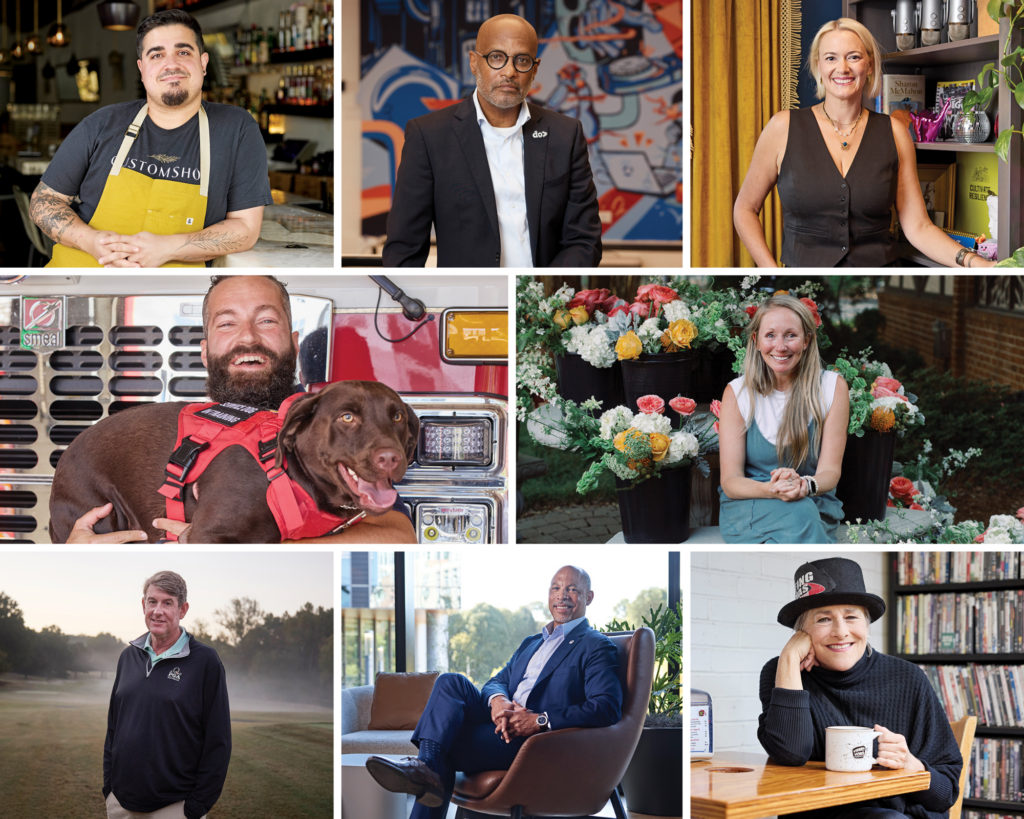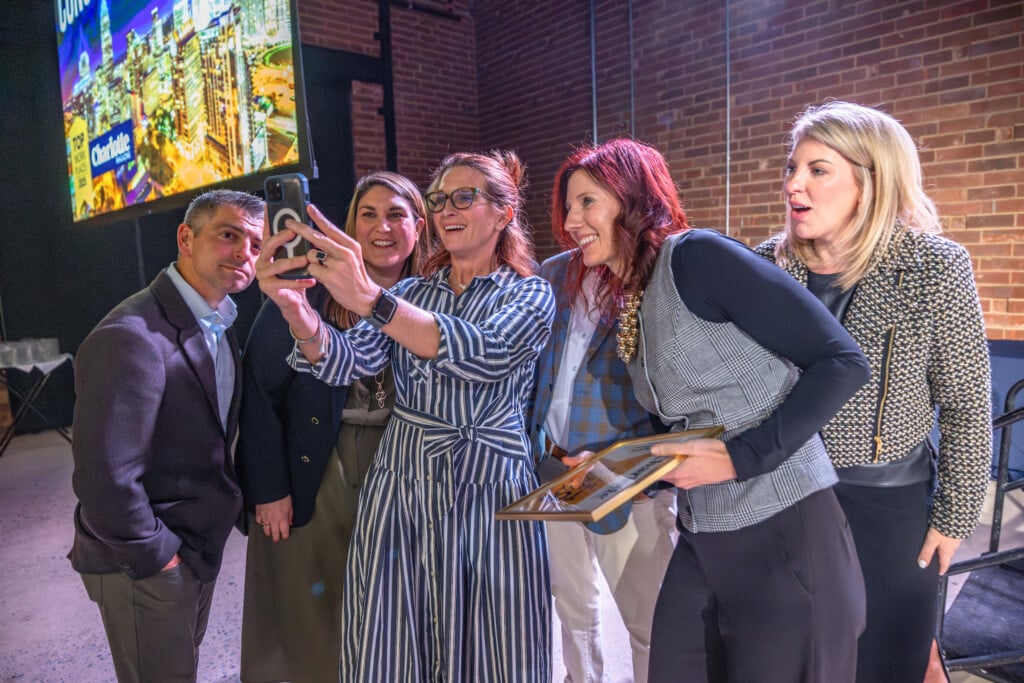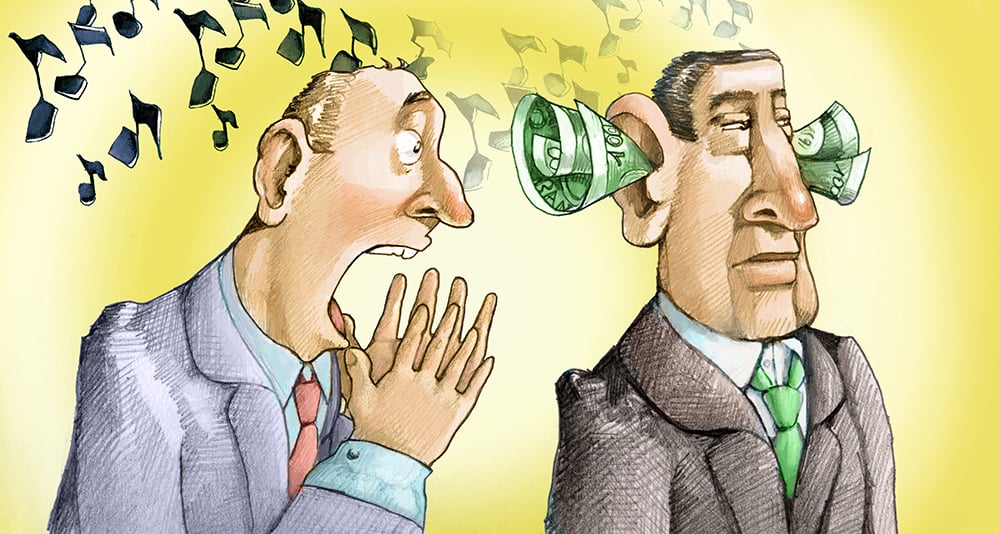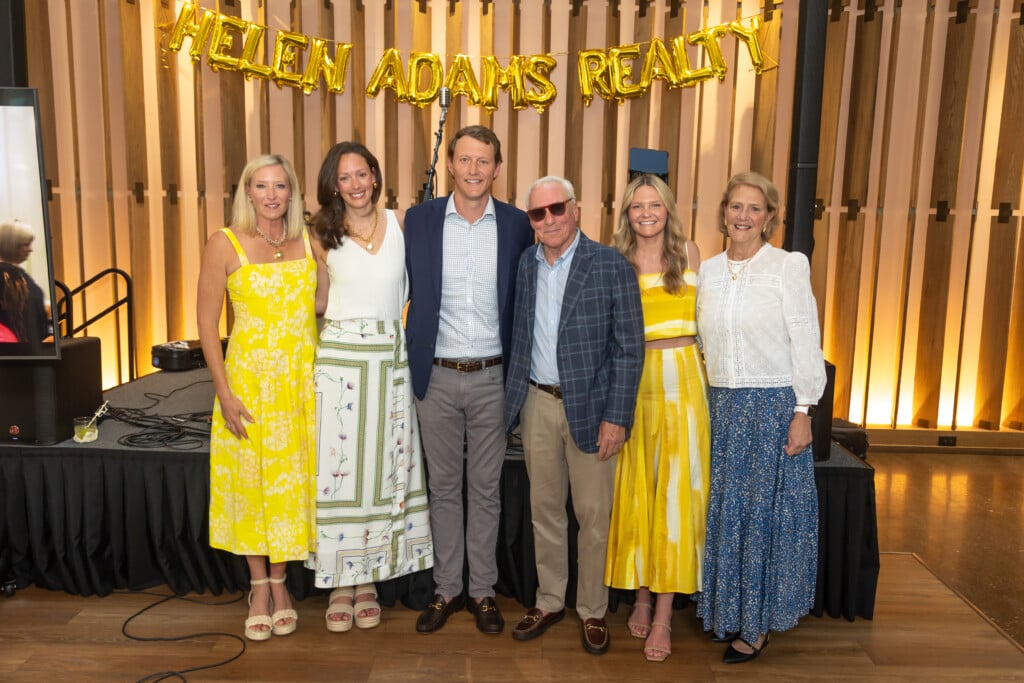How AI Is Changing NASCAR
The sport has entered a new age of data analysis, 3D printers, and optical scanning stations. But what will happen to the sport if tech takes the wheel?
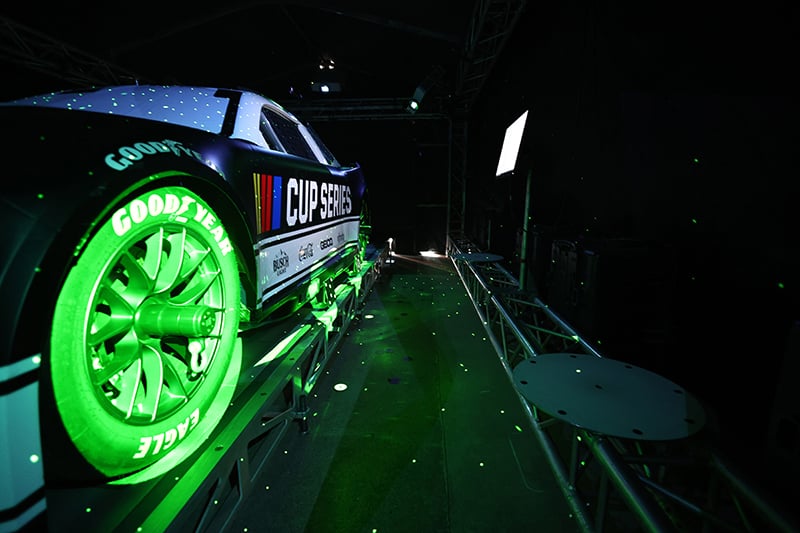
It’s an odd space, a garage-shaped-and-sized Vinylite tent inside a building the size of a blimp hangar. A pair of aluminum ramps lets drivers roll their cars in. Industrial shelves beside the entrance hold servers, wires, and other components. Some glow red against the black of the gear and tent. It’s as if HAL 9000 from 2001: A Space Odyssey had a racing side hustle between Jupiter missions.
The point of all this high technology—at least in the eyes of the people who work here, inside the NASCAR Research and Development Center in Concord—is, in a way, counterintuitive. It’s advanced technology designed to ensure that no race team or driver secures a technological advantage. “Ultimately, we want the guy in last place to be driving the same car as the guy in first place, and it’s the athlete behind the wheel that’s the difference,” Josh Hamilton, a NASCAR spokesman, says as he, I, and a NASCAR scientist approach the tent.
***

The R&D Center in Concord, which opened in 2003 as a hub for the sport’s advances in technology.. Photo by Rusty Williams.
“So this, right here, is a great example. This is what we call the optical scanning station, or OSS,” he says. “We run every car through here before it’s allowed on the racetrack. In here, we have eight projectors and 16 cameras. We run the projectors, and it almost does, like, a light show that displays grids and lines on each car. The cameras collect 200,000 points of data and transfer that to this computer back here”—he gestures to the shelves—“which then recreates a 3D model of the car down to a 1,000th of an inch. The computer knows exactly how the car is supposed to be built. The rule book has the CAD file. It says this is what the perfect car should look like.”
CAD stands for “computer-aided design.” In the course of my conversation with Hamilton and Eric Jacuzzi, NASCAR’s vice president for vehicle performance, I will encounter several arcane three-letter acronyms: CAD, OSS, CPU, GPU, CFD. Hamilton promises to send a glossary.
“This is a six-figure system—it’s not cheap,” Hamilton continues. “We keep this available to every team to come use so even the smaller teams that can’t afford it have the same resources available. They can come for free, schedule an hour block in here, work on the car, manipulate it, and see if the computer says what they think it is. So, to me, this is one of our better examples of using technology and computers to make the sport better.” And this is only the in-house OSS, Jacuzzi notes. NASCAR owns two others that the organization sets up for races—like those during Phoenix Raceway Championship Weekend, which happens a few days after our conversation at the R&D Center in early November.

NASCAR set up an OSS for the NASCAR Cup Series Xfinity 500 at Martinsville Speedway in November. Courtesy, NASCAR/Jared Tilton/Getty Images.
The 60,000-square-foot center opened in 2003 as a hub for stock car racing technology that enhances driver safety and competition. Safety was its initial focus, Hamilton says, spurred by the 2001 death of Dale Earnhardt Sr. at Daytona. In recent years, though, the sport’s governing organization has concentrated on technology that, like the OSS, seeks to prevent what Jacuzzi refers to as a tech “arms race,” in which the richest and most well-known teams have, literally, a built-in advantage. That’s led to NASCAR rules that require uniform equipment and team disclosure of upgrades—which, in a sport this competitive, “actually pissed off some people,” Jacuzzi says.
That’s not the only source of friction. The rapid development of artificial intelligence and data analytics has infiltrated the entire sports world, influencing everything from scouting to strategy. The opposing cleanup hitter tends to pull on off-speed pitches from right-handers? Shade your third baseman 18 inches closer to the foul line, and there’s a 12.3% higher chance that yesterday’s double becomes today’s groundout. It’s fourth-and-three at your opponent’s 44-yard line? A decade ago, you’d have punted. Now, analytics say you go for it.
Some of the same applies to racing. AI can help refine aerodynamics, optimize engine performance, even calculate the most efficient angle for fuel nozzles during pit stops. But stock car racing has a rough-hewn history that emerged from moonshiners juicing up their jalopies to run from revenuers. What would Wendell Scott or Bobby Allison or Dale Sr., for that matter, have to say about computer-generated simulations? They’d bump the software into the wall and floor it, wouldn’t they?
It’s the endless dance of humans and the technology they create: whether people are using the tech, or the other way around. “Is it good for the sport? Is it good for the people sitting in the stands? Does this help them enjoy the race more, to help us sell more tickets?” Jacuzzi says. “I think the jury’s out on that one.”
***

Once the scanning is complete, an official reviews the data and advises the racing team. Courtesy, NASCAR;Jared Tilton/Getty Images.
Those concerns don’t extend to the teams, of course. They just want to win, and that means finding any edge that technology and NASCAR will allow.
Four years ago, Richard Childress Racing formed a partnership with Lenovo, the Chinese technology giant with an American headquarters in Morrisville, outside Raleigh. RCR had lofty ideas about how AI could help shave off precious seconds during pit stops. “We laid out some really big scenarios where we could capture an entire pit stop, which ultimately we will do,” says Eric Kominek, RCR’s technical director. But “it proved to be way too expensive for Lenovo and us to justify. So we took a different approach, and we decided to do it together, one small step at a time.”
The first steps involved refueling. If you’re trying to figure out how your driver can win a race, you pay close attention to how long it takes to get fuel in the car and how much fuel you need. It’s not always a matter of just topping off the tank. During a caution period—when there’s a hazard on the track, and drivers have to reduce their speeds and follow a pace car until it’s cleared—refueling becomes especially tricky. Pit crews have to refuel quickly and make sure they put enough in the tank—but not so much that the car carries extra weight.

At the center, technicians refine performance, design, and other aspects of racing in places like its Chassis Certification room (above and below). Photos by Rusty Williams.
“If you’re pitting under caution, all the cars are pitting together. If you have good track position, and you want to keep it, you need to have a fast pit stop,” Kominek says. “Say the crew chief might call out, ‘I need five seconds of fuel.’ The fuel man has kind of an internal clock in his head where he counts off five and, ‘Go.’ But occasionally, the driver will take off too soon. You don’t get all five seconds in there. In those scenarios, you need to know—before the car goes all the way around the track and pits again—exactly how much fuel you’ve got in the car.”
During this NASCAR Cup season, RCR began to use an AI program that breaks down video footage of pit stops, frame by frame, and uses it to calculate the precise amount of fuel needed at any given stop. “You can train the software to know when the fuel head is engaged with the car,” he says. Any automated process requires data, and RCR spent the 2024 season collecting it during races. By the time Kominek and I speak in October, the team has collected enough and grown comfortable with the process. RCR has just finished the 40-car YellaWood 500 at Talladega, and a pair of its drivers finished in the top 20: Austin Dillon, who finished eighth, and Kyle Busch at 19th. “This past weekend,” Kominek says, “all the bugs were finally worked out to where we got really, really good results.”
To a casual or non-fan, the details of AI-assisted refueling might sound like so much splitting of so many hairs. But the sport measures time in fractions of seconds, and the accumulation of details can make the difference between first place and fourth, or worse. If a car glides to a halt 20 feet shy of the pit because the refueler pulled the nozzle out an eighth of a second early on the previous stop, you may as well have sat the race out.
RCR hopes to refine its pit stops even more: to measure the precise nozzle angle to achieve maximum fuel flow rate, calculate ideal tightness for lug nuts, and equip crew members with smart glasses. “That’s the next step,” Kominek says. “AI is not replacing the old way. It’s enhancing what we do already to make better-informed decisions about our strategy.”
Even so, he understands the sport’s reluctance to depend too much on technology. He’s in his mid-50s, having worked for RCR since 2016 and as its tech director since 2020. “The world’s getting smaller as far as technology and motorsports go,” he says. “It’s a very big departure from where we were, for sure.
“It’s funny, but when I first came into the sport, it was basically a 1957 Chevy front-end and a truck rear suspension, right? And guys learned how to take all these street-car parts and optimize them to make speed. But then that wasn’t good enough, even though the rules were written around that. So we all started making our own.”
***

The quote from NASCAR founder Bill France Sr. on a wall at the R&D Center is meant to urge technicians to keep advancing: “We are all interested in one thing—that is, improving the present conditions. The answer lies in our group right here today to do it.” Photos by Rusty Williams.
 Visitors to the R&D Center are greeted by a quote from NASCAR founder Bill France Sr., painted in black letters above a doorway in the massive display room. “We must try to get track owners and promoters interested in building stock car racing up,” it concludes. “We are all interested in one thing—that is, improving the present conditions. The answer lies in our group right here today to do it.” France said it during NASCAR’s organizational meeting in Daytona Beach, Florida, on Dec. 14, 1947. It’s a clear message to (and from) the more than a dozen engineers who work there.
Visitors to the R&D Center are greeted by a quote from NASCAR founder Bill France Sr., painted in black letters above a doorway in the massive display room. “We must try to get track owners and promoters interested in building stock car racing up,” it concludes. “We are all interested in one thing—that is, improving the present conditions. The answer lies in our group right here today to do it.” France said it during NASCAR’s organizational meeting in Daytona Beach, Florida, on Dec. 14, 1947. It’s a clear message to (and from) the more than a dozen engineers who work there.
Eric Jacuzzi is a 41-year-old native of Windsor, Ontario, and the owner of a doctorate in mechanical engineering from the University of Michigan. He’s in charge of the aerodynamics team—an expert in the field of computational fluid dynamics, or CFD, another of those acronyms. It’s a way to measure how fluids and gasses move in and around a vehicle; the more efficient your CFD, the better your performance. “We’ll look at slices of the air and say, ‘OK, there’s a vortex core,’” says Jacuzzi, who, as previously mentioned, has a doctorate in mechanical engineering.
He moved down to North Carolina after he earned the degree to join a friend of his who worked at Corvid Technologies, an engineering firm in Mooresville. Through Corvid, he worked as a CFD contractor for Childress Racing for a year and a half. Then NASCAR hired him to do the same thing. “They had previously just been, you know, paying consultants to do it, or asking teams to do it,” Jacuzzi says, “and then they said, ‘We’ve got to get serious about this. … We need to have our own people who are working on this for the good of the sport.’”
Aerodynamics is one of five specialties at the center; the others are engine development, safety, the chassis and tires, and vehicle design. There’s considerable overlap between the work of NASCAR engineers and those of General Dynamics and other aerospace companies, Jacuzzi says. For both, regardless of mission, the machines have to operate at the highest possible level.
“I did a panel in January with, like, the head of Lockheed (Martin) R&D and a bunch of other people, all in the aerospace world, and all of our stuff is very, very similar,” he says. “It’s a lot of technology all around, less and less physical, more virtual.”
And there, to reference both Dale Sr. and Shakespeare, is the rub. Next to the OSS, the three of us discuss the push-pull of technology, the battle not of team and team but human and machine. There’s conflict, too, between teams and drivers who want nothing but victory and a sport that seeks fair competition. What NASCAR and fans want sometimes is the opposite of what teams and drivers want: The latter consider a runaway victory, in which a driver leads from green flag to finish line, a spectacular success. NASCAR and fans might see that as a bore, and incentive to change the channel or check Instagram.
The tension between those two poles, and which one technology serves more, presents a question the sport hasn’t answered. “We make full use of the technology,” Hamilton says, “but then always have the human there to validate what the computer is saying.”
Jacuzzi and Hamilton make another baseball analogy.
“I don’t know,” Jacuzzi offers, “that all the data and analytics and all the rest of it made baseball better.”
“No,” Hamilton replies, “you could argue it made it worse.”
Hamilton references a statement by John Probst, NASCAR’s chief racing development officer: We want the race to be won on the track, not in the wind tunnel. Fans don’t buy tickets to the wind tunnel. True enough, but fans like winners, too, and if the wind tunnel helps you win … Until it gets sorted out, if it ever does, human and machine will race in tandem. Appropriately enough, they’ll constantly jockey for the lead.
GREG LACOUR is the editor.








